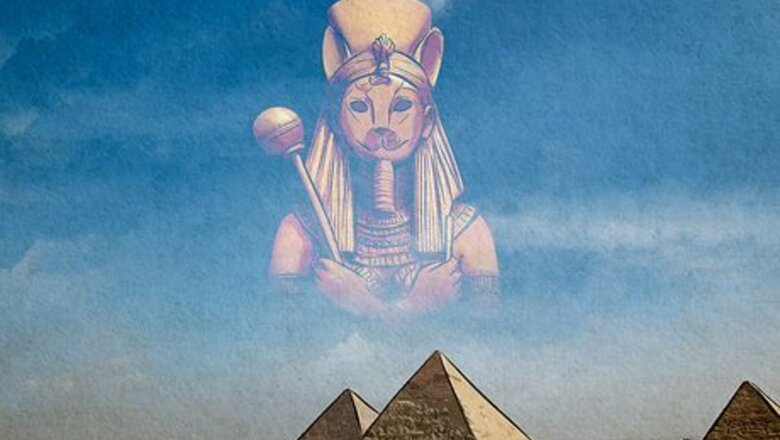
views
- The ancient Egyptians worshiped numerous cat gods including Bastet, Mafdet, and Sekhmet.
- The Maya and Aztecs worshipped several gods that took the form of jaguars and represented night and nature.
- In Norse mythology, the goddess Freyja is considered a cat goddess because her chariot is pulled by cats.
Ancient Egyptian Cat Gods
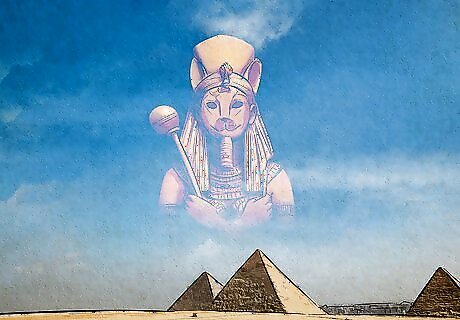
Bastet Bastet is the ancient Egyptian goddess of cats, domesticity, women and fertility, and protection. She is typically depicted as having the head of a cat. She is the daughter of Ra, the sun god, and was one of the most popular deities in ancient Egypt because she was the protector of the home and family. Bastet has had many names including B’sst, Ubaste, and Bast. While the exact meaning of her name is unknown, some believe it means “She of the Ointment Jar,” as she is associated with protection and protective ointments. Originally associated with the goddess Sekhmet, early depictions of Bastet show her with a lion’s head, but over time, she lost this association as the Egyptians began to view her as a daily companion rather than a savage warrior.
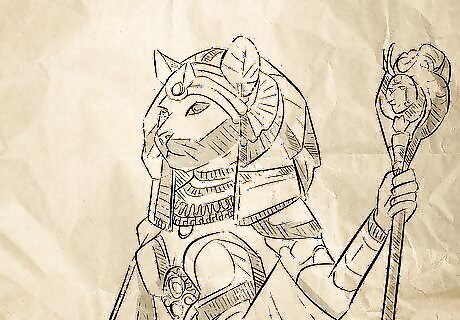
Sekhmet Sekhmet is the ancient Egyptian goddess of the sun, plague, chaos, war, and healing. She has the body of a woman and the head of a lion wearing a sun disk. The sun god Ra created her to destroy humans for their disobedience and not following the principles of Ma’at. Sekhmet protected pharaohs and led them in warfare, and she was the patron god of physicians and healers because she could cure disease and prevent plague. When Sekhmet is calm, she takes the form of Bastet. The Egyptians often whispered their prayers into the ear of a mummified cat to offer them to Sekhmet. To stay on her good side, they offered her food and drink, burned incense, and played music for her.
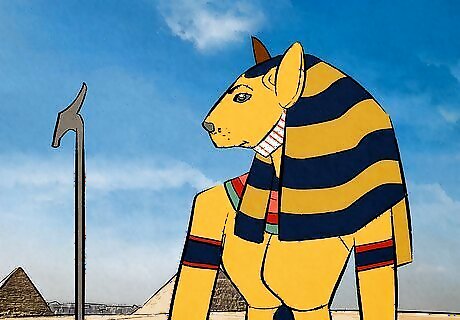
Mafdet In the Old Kingdom, the first dynastic period of Egypt, Mafdet was a lynx-headed goddess of justice and judgment, and she served as the right-hand and protector of Ra and the pharaohs. Other feline goddesses like Bastet and Sekhmet eventually replaced Mafdet and she was written out of history. While most commonly depicted with the head of a lynx, sometimes Mafdet was shown with the head of a panther, lion, or leopard. Because cats protected ancient Egyptians from venomous snakes, they were highly revered and therefore portrayed as some of the fiercest goddesses. In turn, cats became sacred creatures and were worshipped in their own right.
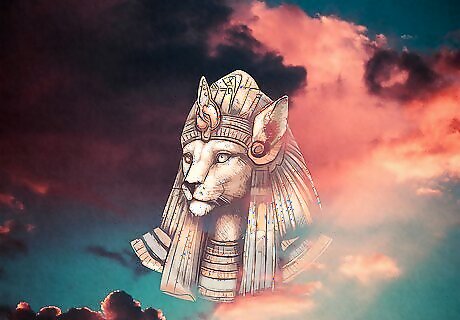
Tefnut Tefnut is the ancient Egyptian goddess of moisture, rain, and water. She is one of the Heliopolitan Ennead, a group of 9 deities who were primarily worshipped in the ancient city of Heliopolis. She has the head of a lioness, and when angered, she brings droughts, heat waves, and bad harvests. The ancient Egyptians believed that Tefnut and her twin brother Shu, the god of air, were created by the god Atum through self-creation. Tefnut and Shu were the parents of Nut, the sky goddess, and Geb, the earth god. Tefnut’s separation from Shu created the space between the sky and the earth. While Tefnut and Sekhmet both have lion heads, they aren’t the same goddess. Sekhmet is typically depicted with rounded ears, while Tefnut is depicted with pointed ears.
Ancient Greek & Roman Cat Gods
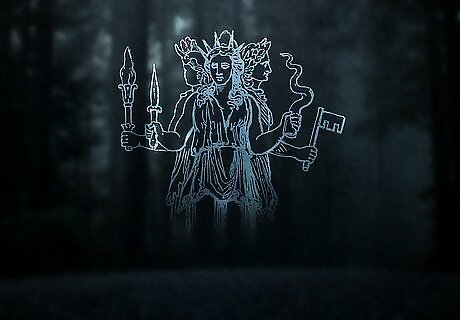
Hecate Hecate is the Greek goddess of magic, witchcraft, crossroads, and necromancy. In some myths, the goddess Hera turned a serving maid named Galanthis into a cat as a punishment for being rude, and in turn, the cat became Hecate’s familiar. In another myth, Hecate assumes the form of a cat so she can get away from the monster Typhon. Because cats weren’t domesticated in Greece, the ancient Greeks did not have a god or goddess of cats, but they did have several connected to cats or big cats through various myths.
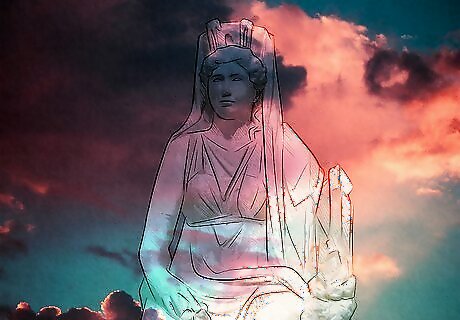
Cybele Cybele is the Phrygian and Greek goddess of motherhood, fertility, nature, and agriculture. Lions are one of her sacred symbols, and she is frequently depicted with them by her side. As the Great Mother, Cybele gave birth to the other gods, the first humans, animals, and nature in general. In one myth, Cybele turned Atalanta and Hippomenes into lions for having sex in her temple, and as lions, they pulled her chariot.
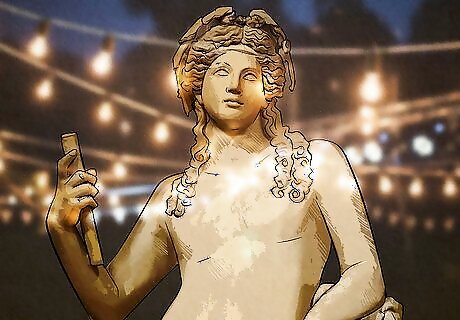
Dionysus Dionysus is the Greek god of wine, parties and festivals, chaos, madness, and ecstasy. The tiger is one of his sacred animals, and in one myth, he traveled to India in a chariot pulled by panthers. Dionysus was frequently depicted wearing leopard skins, so his priests often wore similar skins during rituals.
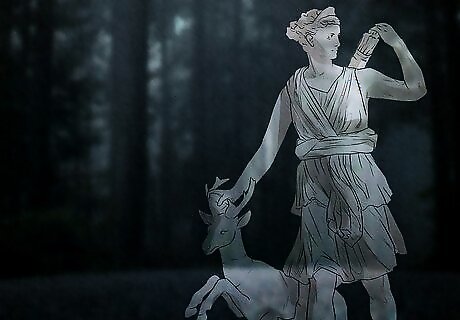
Artemis Artemis is the Greek goddess of the hunt, the wilderness, young girls, and childbirth. Because wild animals are sacred to her, many associate her with big cats like lions and panthers. The ancient Greeks sometimes equated her with the ancient Egyptian goddess Bastet, so she was also associated with cats through that connection. Because the goddess Diana is the Roman equivalent of Artemis, she is also sometimes associated with big cats.
European Cat Gods
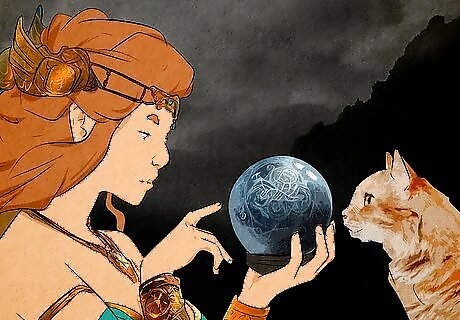
Ceridwen Ceridwen is the Welsh goddess of inspiration, transformation, and poetry. Sometimes, she was attended by white cats who carried out her orders.
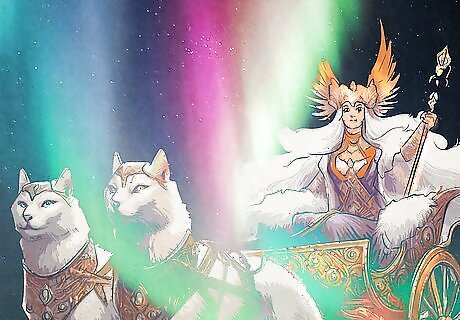
Freyja Freyja is the Norse goddess of fertility, love, beauty, death, and war. She often rides a chariot pulled by 2 cats named Bygul and Trjegul, who were a gift from Thor. Because of this, worshippers believed cats were sacred animals that also acted as guardians to the afterlife. According to the myth, Thor found the magic cat Bayun singing to two kittens. Struggling as a single father, Bayun asked Thor for help, and Thor decided to give the kittens to Freyja.
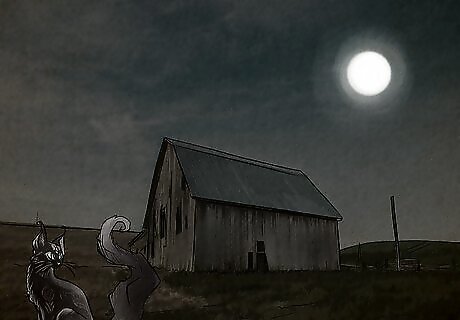
Ovinnik In Slavic folklore, the Ovinnik is a malevolent household spirit that takes the form of a black cat. Peasants often offered him roosters and bliny to placate him. In other versions of the legend, some farming families worshipped him because he chased away evil spirits. On New Year’s Eve, the touch of the Ovinnik would determine your luck for the year. A warm touch meant good luck and fortune while a cold touch meant unhappiness.
Asian Cat Gods
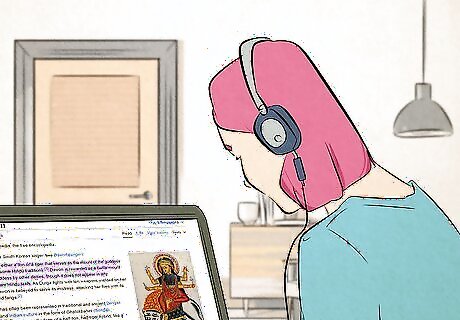
Durga and Dawon Durga is the Hindu goddess of protection, strength, motherhood, destruction, and war. Dawon is the tiger that serves as Durga’s mount in a number of myths and often helps the goddess attack and defeat her enemies.
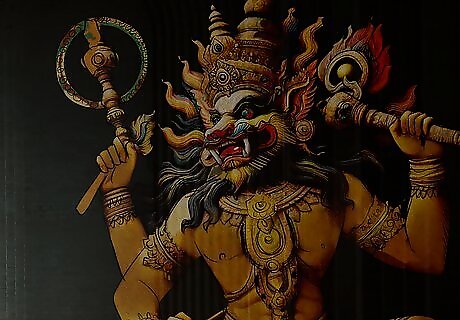
Narasimha Narasimha is one of the 10 avatars of the Hindu god Vishnu. He appears as a half-man, half-lion and is the god of protection, destruction, yoga, and transition. The sanskrit for Narasimha literally means “Man-Lion.” Vishnu transformed into Narasimha to kill the demon king Hiranyakashipu, who could not be killed by man or animal. Since Narasimha was neither fully man nor animal, he was able to defeat him.
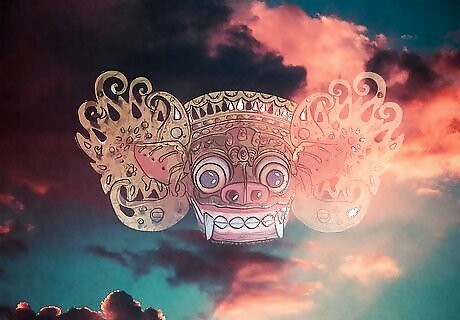
Barong Barong is the King of Spirits in Balinese mythology. He appears as a panther-like creature and is the enemy of Rangda, the demon queen. Because Barong is the protector of villages, the Balinese created the Barong Ket, a sacred mask worn in ceremonies to recreate the battle between Barong and Rangda.
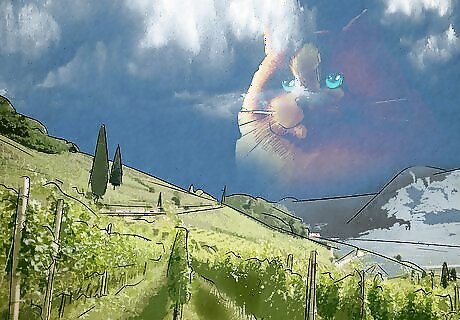
Li Shou Li Shou is a Chinese cat deity known to bring good fortune and protect crops. She is typically depicted with a bushy tail, elongated whiskers, and an air of quiet nobility. Li Shou’s wisdom, independence, and grace mirror the characteristics we admire in house cats. Farmers often offered prayers and gifts to Li Shou in hopes of earning her favor and protection to ensure a bountiful harvest. In one ancient Chinese myth, the other gods gave Li Shou the task of running the world on their behalf. She then took several naps under a cherry tree, and by the time she awoke, the world had fallen into chaos. The other gods relieved her of her duties and handed her responsibilities to humans.
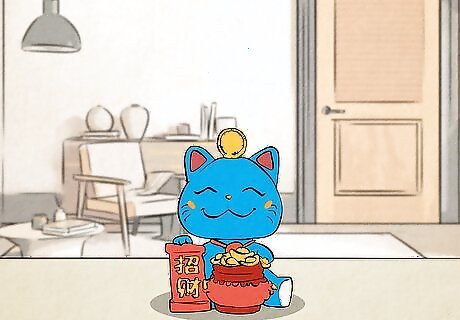
Cai Shen Cai Shen is the Chinese god of wealth and is often the deified manifestation of historical figures. He takes the shape of a giant blue cat.
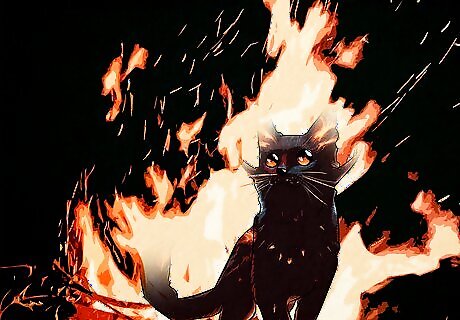
Kasha The Kasha is a Japanese deity/demon that is often depicted as a flaming cat. It comes down from the heavens on a fireball and drags the bodies of the dead to the underworld for eternal damnation. The kanji for Kasha literally translates to “fire cart” so it is sometimes depicted as a flaming cart rather than a cat. The myth of the Kasha arose during the Kamakura period in Japan, a time of great change and several new schools of Buddhism. Many people believed the period was the end of times. While the fire cart version of the Kasha came first, the myth might have developed into a cat because of the word akaneko, which is a slang term for fire meaning “red cat.”
Middle Eastern Cat Gods

Nergal Negal is the ancient Babylonian god of death, pestilence and plague, and warfare. He would accompany kings into battle to deliver death to the enemy, and he controlled several demons and evil forces. Nergal is often portrayed as a man carrying a mace topped with a double lion’s head.
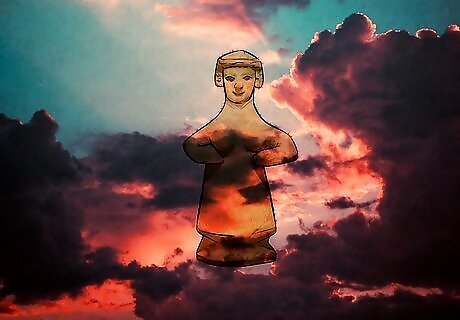
Asherah Asherah is an ancient Semitic goddess sometimes known as the Lion Lady. She is one of the 3 great goddesses of the Canaanite pantheon and is primarily a mother goddess. She is the mother of approximately 70 gods, and her children are sometimes called her “pride of lions.”
North & South American Cat Gods
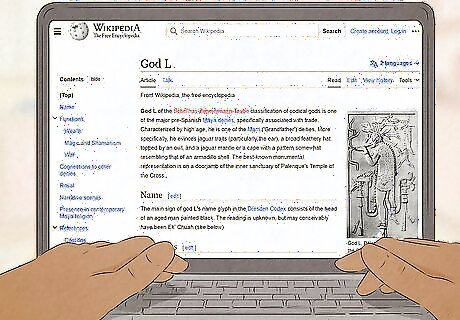
God L Sometimes known as the Mayan Jaguar God of the Underworld, the exact name of this god has yet to be deciphered. God L is associated with fire, war, rain and lightning, trade and merchants, and darkness and night. He is typically depicted with jaguar ears and markings.
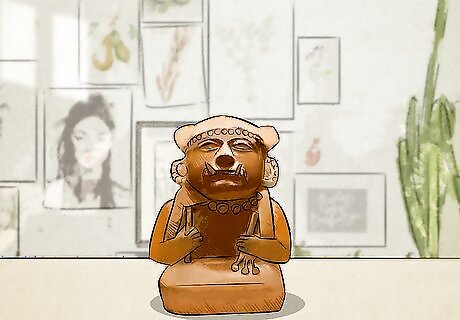
Ai-Apaec Ai-Apaec was the chief deity of the Mochica, a Peruvian, pre-Inca society, whose task was to travel to different worlds to ensure the continuation of nature’s cycles. In some depictions, he has jaguar fangs or wears a crown with a feline face.
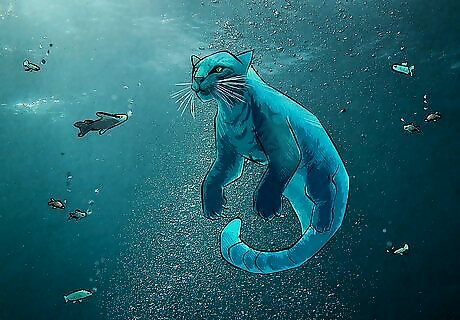
Mishipeshu Mishipeshu, known as the “Water Panther” or “Great Lynx” is a Native American deity associated with the Ojibwa tribe. It appears as a cross between a panther and a dragon, and it lives in deep water and causes people to drown. If travelers offered it tobacco, however, it might allow them safe passage. The Algonquin, Ottawa, Menominee, Shawnee, and Cree tribes also have legends about the Mishipeshu. When angry, Mishipeshu causes waves, whirlpools, and rapids, and it can break ice in the winter to cause people to fall through. The Algonquins regarded Mishipeshu and other underwater beings as bringers of protection, healing, and medicine.
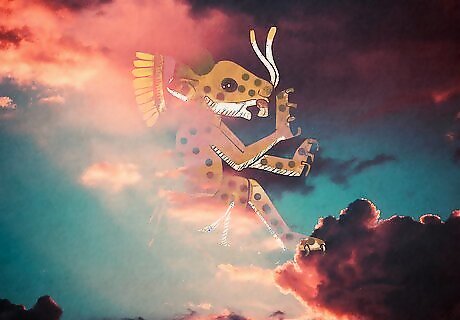
Tepeyollotl Tepeyollotl is the ancient Aztec god of caves, earthquakes, echoes, and jaguars. Sometimes referred to as the “Heart of the Mountain” or the “Jaguar of the Night,” he is typically depicted as a jaguar leaping over the sun. Tepeyollotl is a variant of Tezcatlipoca, the god of the night sky, ancestral memory, and time. His jaguar form is Tepeyollotl.

















Comments
0 comment